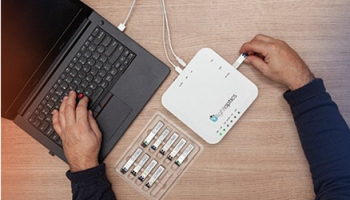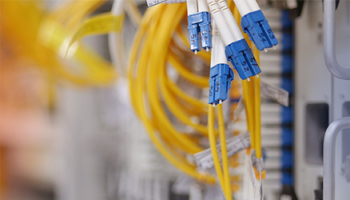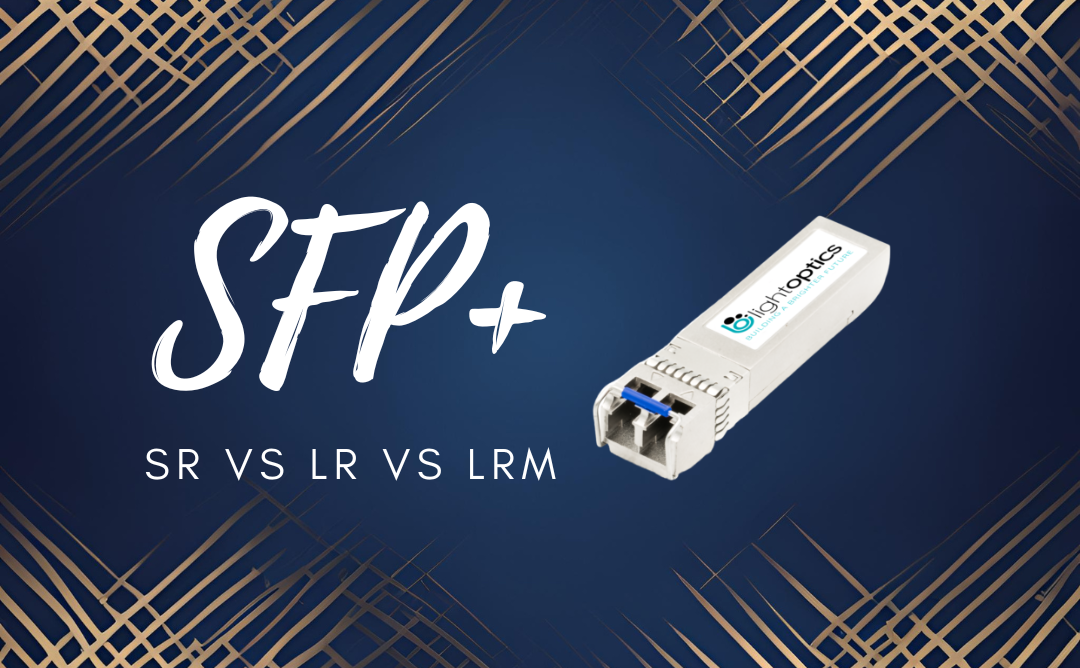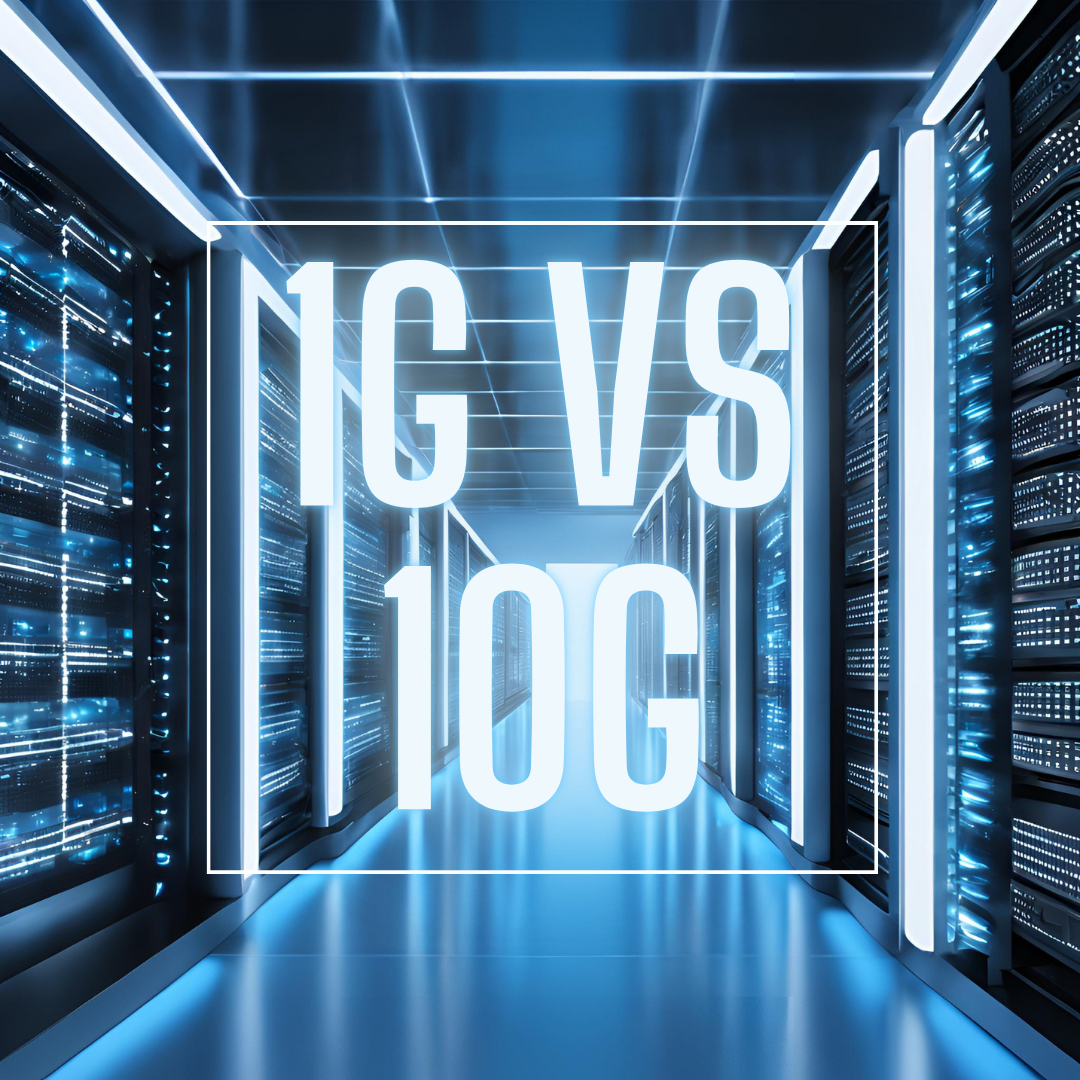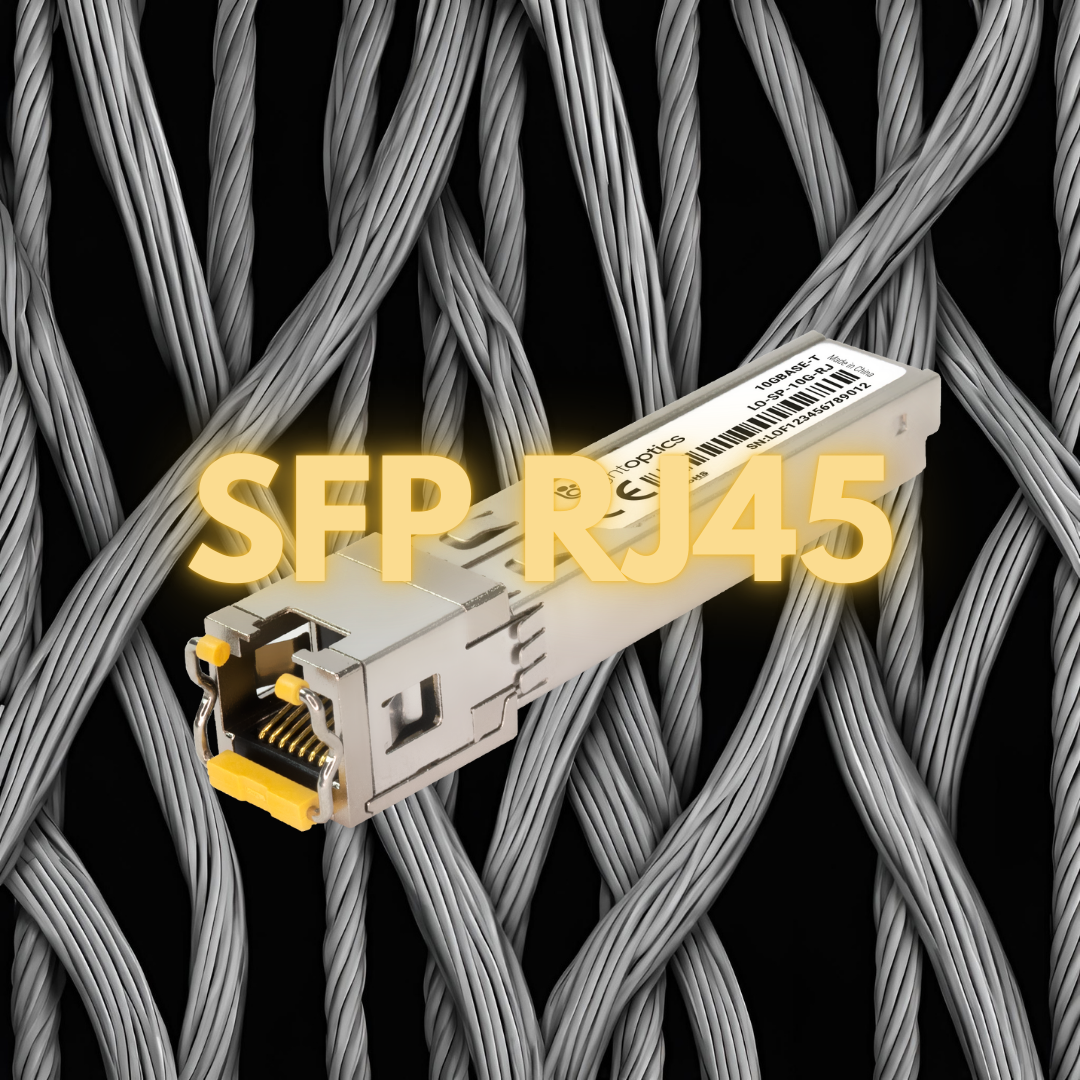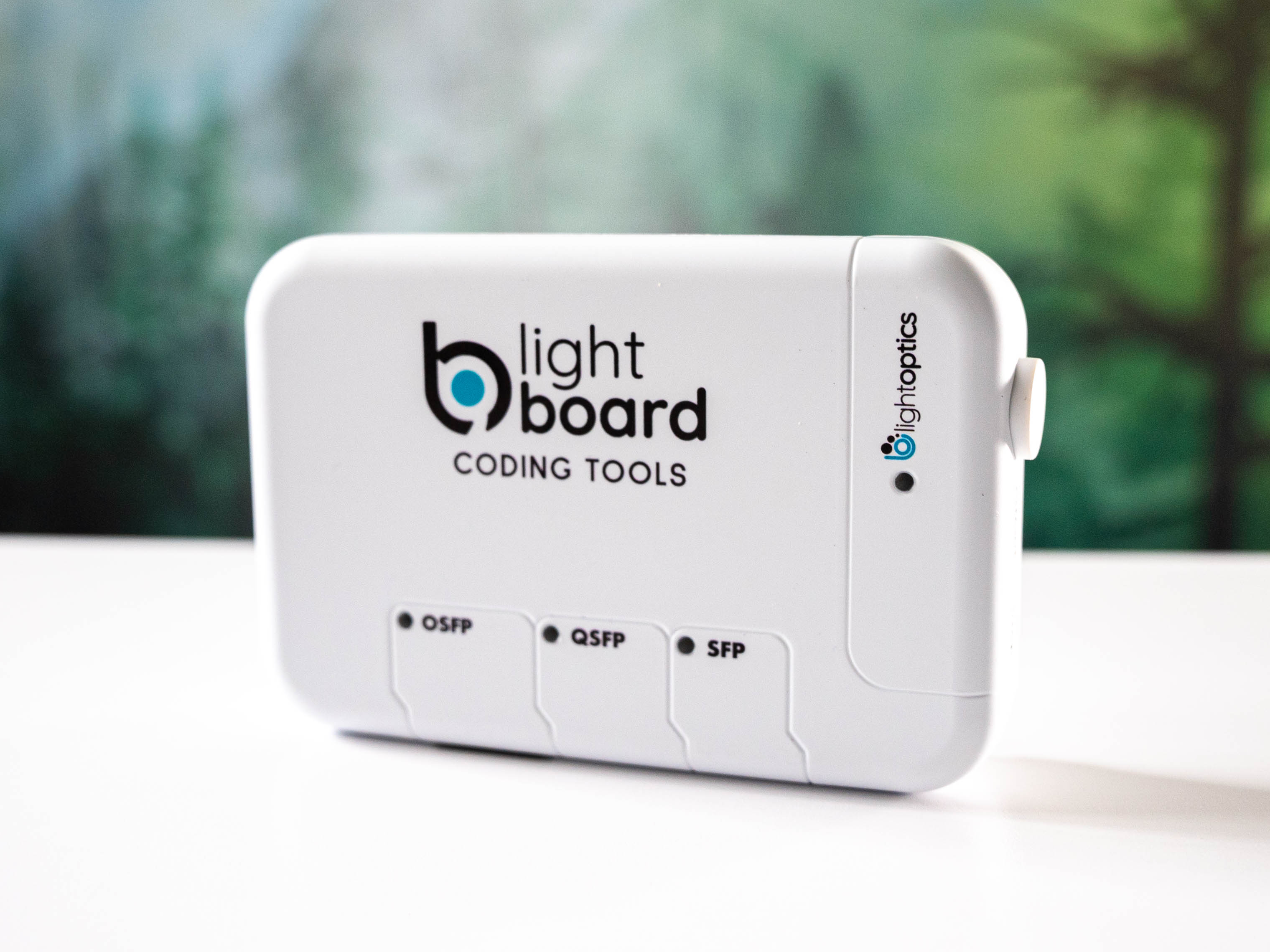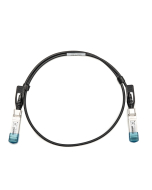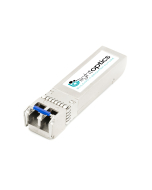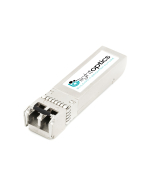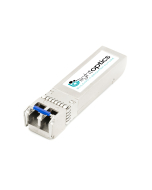At first glance, SFP+ and SFP28 modules may seem almost identical. Both share the same shape, known as a form factor, which might lead to the mistaken belief that they are interchangeable. However, despite appearances, these two types of modules differ significantly in ways that affect network performance and scalability.
The identical form factor of SFP+ and SFP28 modules does allow for a certain level of cross-compatibility. Understanding this SFP+ and SFP28 compatibility is critical during network installations. Key distinguishing factors such as speed, performance, and port compatibility are crucial in selecting the right solutions for your network.
Below, we outline the main differences and installation possibilities for SFP+ and SFP28 modules.
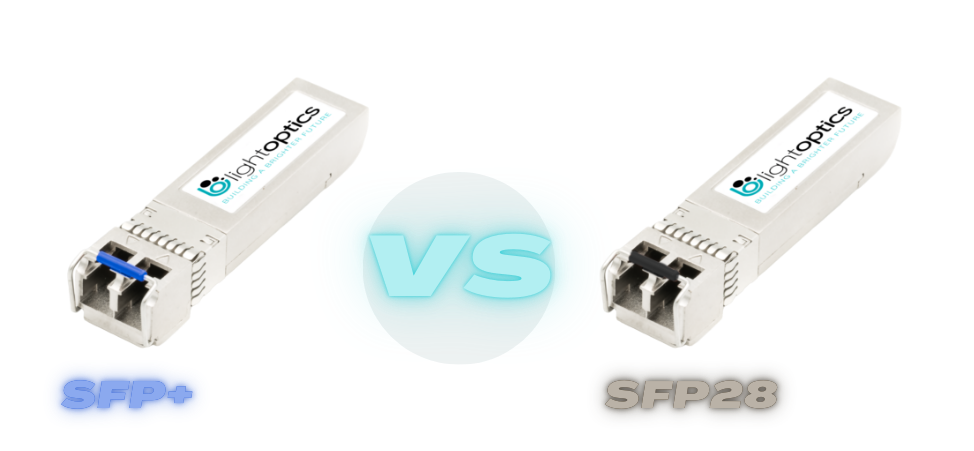
What is SFP+?
SFP+ (Small Form-factor Pluggable Plus) has become the standard solution for many networks that require reliable data transmission at speeds up to 10 Gbps. As an improved version and successor of the SFP module, it supports faster speeds while maintaining compatibility with a wide range of network devices. SFP modules support speeds ranging from 100Mb to 4.25Gbps, but the most common version is the SFP 1Gb Ethernet. In contrast, SFP+ 10G modules offer speeds from 6Gbps to 32Gbps, with the most frequently used type being SFP+ 10Gb Ethernet.
SFP+ modules are highly versatile, supporting a variety of protocols such as Ethernet, Fiber Channel, and SONET/SDH. Depending on the module type, they can be used with different kinds of cabling, including single-mode and multi-mode fiber optics as well as copper cables. This flexibility makes them a solid choice for a wide range of network environments.
What is SFP28?
SFP28 can be seen as a "turbo" version of SFP+, designed to meet the demands of future-proof networks. It supports speeds of up to 25 Gbps, making it an ideal solution for high-speed applications such as cloud computing and modern data centers. If you're thinking about upgrading your network with a forward-thinking approach, SFP28 is a strong candidate.
One of the biggest advantages of SFP28 is its backward compatibility with SFP+. This means you can plug an SFP+ module into an SFP28 port, although it will operate at 10 Gbps. This backward compatibility provides flexibility during network upgrades, allowing for a gradual transition to SFP28 without the immediate need to replace the entire infrastructure.
Some SFP28 modules come with a built-in Dual Rate option, allowing you to switch between 10 Gbps and 25 Gbps from the switch, depending on the current network requirements. This greatly enhances network flexibility and capabilities.
Additionally, SFP28 modules offer improved signal integrity and energy efficiency compared to SFP+, making them a more advanced and efficient choice for growing networks.
Key Differences: SFP+ vs. SFP28
At first glance, they may seem similar, but they differ significantly in several key areas:
- Data Transmission Speed:
- SFP+: Maximum speed of up to 10 Gbps (for Ethernet).
- SFP28: Speed of up to 25 Gbps Ethernet.
- Energy Efficiency:
- SFP28 offers better energy efficiency, resulting in lower power consumption and less heat generation, which is particularly important in large data centers.
- Signal Integrity:
- SFP28 ensures better signal stability and integrity, leading to fewer errors when transmitting data at higher speeds.
- Internal Technology:
- SFP28 uses more advanced signaling techniques, which support higher speeds with better energy efficiency and improved signal stability.
- SFP+ relies on older technologies optimized for lower speeds.
These differences make SFP28 25G a more advanced solution in almost every aspect compared to SFP+ 10G. SFP28 allows for building networks that can handle increasing demands for bandwidth and performance.
However, SFP+ remains a great choice for many networks, especially if you're working with a limited budget or if your current infrastructure doesn't require speeds higher than 10 Gbps. It is reliable, widely supported, and cost-effective.
Compatibility: SFP28 vs. SFP+
One of the most common questions regarding the differences between SFP+ and SFP28 modules revolves around their mutual compatibility and interchangeability. This typically leads to two frequently asked questions:
Can SFP+ modules be used in SFP28 ports?
SFP+ 10Gb modules can only be installed in SFP28 ports that also support 10Gb speeds. This information can be easily found in the device's specifications or manual.
SFP28 ports are designed with backward compatibility in mind, meaning they can support SFP+ modules. If you connect an SFP+ module to an SFP28 port, it will function properly but will be limited to 10 Gbps speeds. This backward compatibility is a significant advantage when upgrading your infrastructure gradually. You can deploy SFP28 ports while continuing to use your existing SFP+ modules.
Can SFP28 modules be used in SFP+ ports?
Here’s where it gets more complicated. You cannot use SFP28 modules in SFP+ ports if you want to achieve the 25 Gbps speeds that SFP28 is known for. SFP+ ports are designed for Ethernet networks with speeds of up to 10 Gbps, so if you connect an SFP28 module, it either won’t work or its performance will be severely limited. This is something to keep in mind when planning upgrades—you may need to update your equipment to fully benefit from SFP28.
Choosing the Right Solution for Your Network
How do you decide between SFP+ and SFP28? Here are a few key factors to consider:
- Current and Future Network Needs: If 10 Gbps is sufficient for now, SFP+ is a solid and cost-effective option. However, if you anticipate needing more bandwidth in the near future, it may be wise to plan for a gradual transition to SFP28.
- Infrastructure Compatibility: If your equipment is only configured for SFP+, you should weigh the benefits of upgrading your infrastructure to fully utilize SFP28. Keep in mind that SFP28 can operate in SFP+ ports, but it won't reach its full potential in terms of speed.
- Budget: While SFP28 might come with a higher price tag, it is also more future-proof. Balancing the cost against the benefits of faster speeds and greater energy efficiency is key to making the right choice.
- Energy Efficiency: SFP28 modules generally offer better energy efficiency, which can be especially important in environments like data centers where power consumption is a major consideration.
In our offering, you will find:
- SFP28 10/25G Optical Modules:
- 25G DAC Cables:
There are SFP28 DAC cables in two types: SFP28 25G/10G and SFP28 25G. We offer the more economical and popular option is the SFP28 25GbE cables, available in our store.
Both optical modules and DAC cables are available for configuration with devices from any network equipment manufacturer.
Summary
SFP+ is a proven, reliable solution for networks that require speeds of up to 10 Gbps. On the other hand, SFP28 enables network growth with higher throughput, reaching 25 Gbps, and offers better performance. It also allows for gradual modernization, thanks to the compatibility between SFP28 and SFP+ ports and modules. Understanding the compatibility between these two technologies is crucial when planning network upgrades, ensuring that your infrastructure remains efficient, reliable, and ready to scale with your organization’s future needs.










